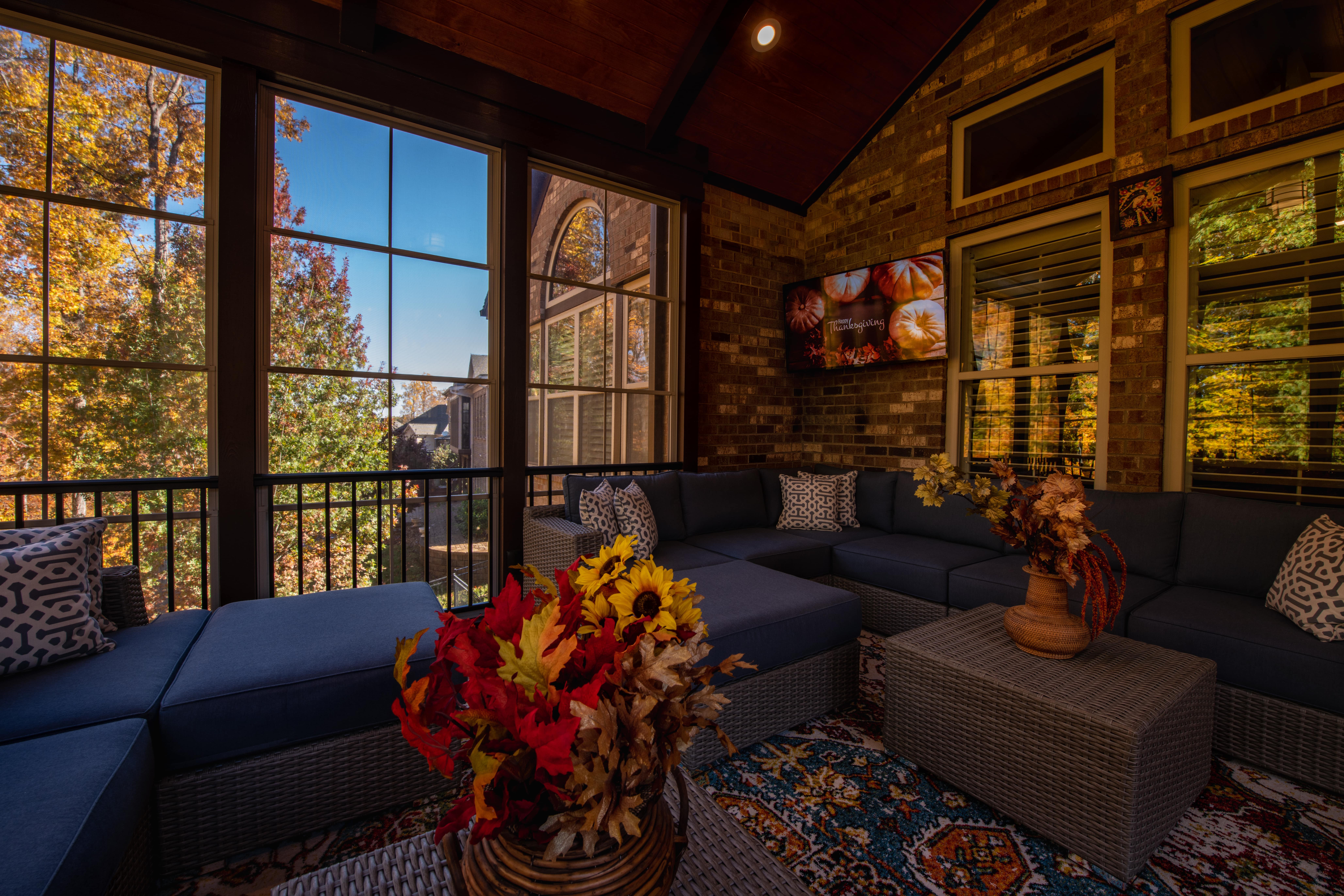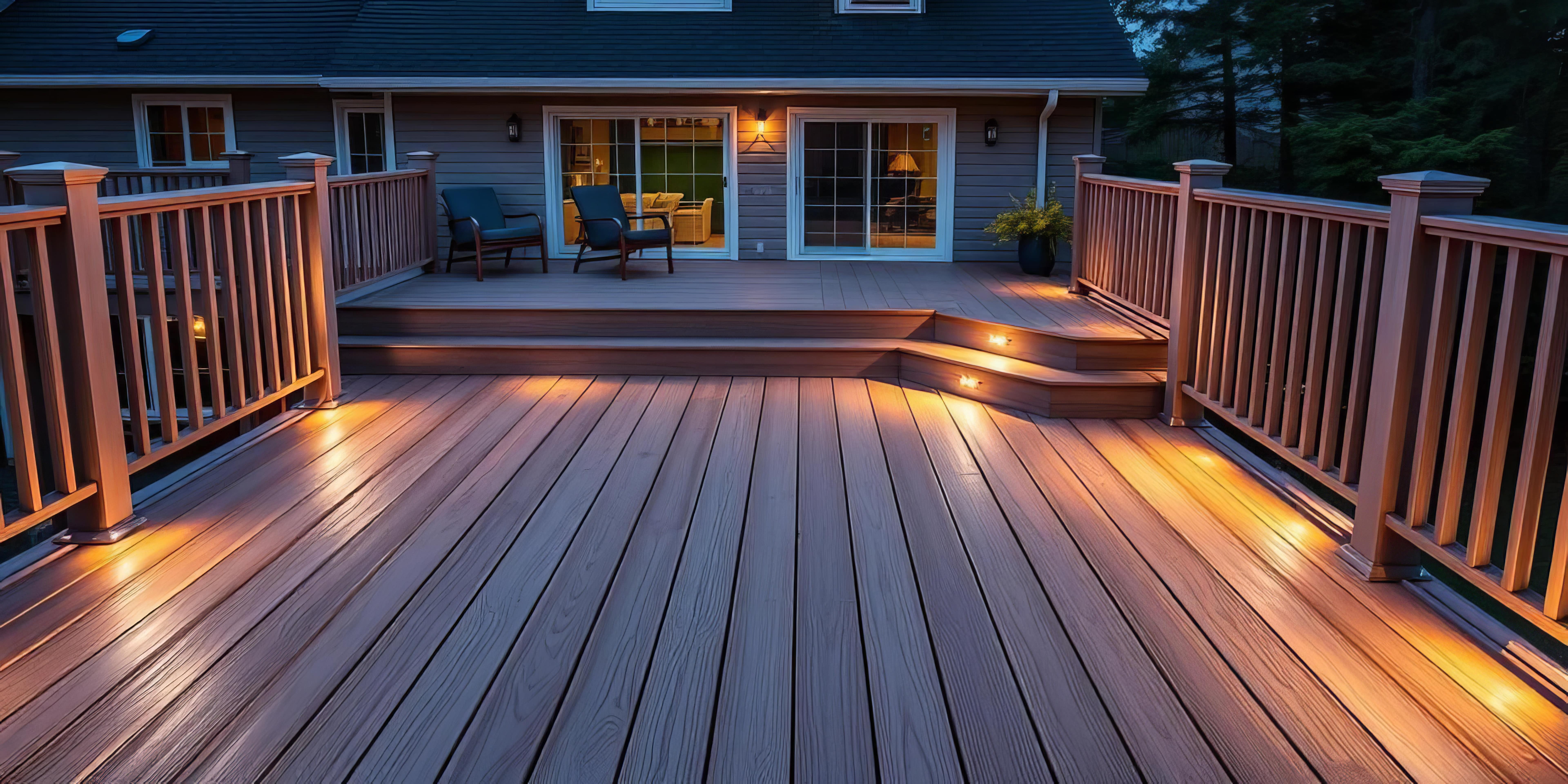Fall Deck Prep: Essential Maintenance Before Winter Hits
As Denver homeowners prepare for the seasonal shift, few outdoor structures are as exposed to the elements as a deck. With snow, ice, and high winds arriving in winter, fall becomes the most important time to inspect, repair, and protect outdoor living spaces. Centennial Custom Decks has long served Colorado homeowners with high-quality craftsmanship and maintenance expertise, and the transition into colder weather is a critical period where proactive steps can prevent costly damage later. This guide offers a detailed seasonal checklist designed specifically for Denver’s climate and helps answer common homeowner questions on how to winterize a deck effectively.
Why Fall Deck Maintenance Matters in Denver
The Front Range is known for its weather extremes. Denver averages 57 inches of snow annually and experiences rapid freeze-thaw cycles due to high elevation and fluctuating daytime and nighttime temperatures. According to the National Weather Service, temperatures can swing as much as 40 degrees in a single day, creating ideal conditions for wood expansion, contraction, and moisture damage.
For deck owners, this translates into multiple risks:
- Moisture infiltration that causes rot in untreated wood.
- Surface erosion of finishes and stains from snow and ice.
- Freeze-thaw splitting in natural wood decks.
- Loose railings or joists due to wind stress.
- Mildew and mold growth where snowmelt pools.
Centennial Custom Decks emphasizes that just like a roof inspection before winter, a deck inspection ensures homeowners maintain both the beauty and safety of their outdoor structures year-round. Waiting until spring to deal with problems means facing larger repair costs and, in some cases, the need for a full replacement.
Inspect and Repair Before Snow Falls
The first step in fall deck prep is inspection. Homeowners should conduct a close visual review of their deck surface, railings, stairs, and support structure. Key questions include:
- Are there cracked or splintered boards?
- Do any railings wobble or feel loose under pressure?
- Is the hardware (nails, screws, bolts) rusting or pulling away?
- Are there signs of water damage or dark stains indicating mildew?
Professional contractors often use moisture meters to test for hidden water retention, something most homeowners cannot detect with a casual glance. Centennial Custom Decks recommends scheduling a fall checkup where small repairs—tightening connections, replacing boards, sealing cracks—prevent major winter failures.
This proactive step reduces hazards like slippery stairways or collapsed railings, which are common injuries during winter when surfaces are icy. According to the Consumer Product Safety Commission, more than 20,000 deck-related injuries occur annually in the U.S., many from preventable maintenance oversights.
Clean Surfaces and Remove Debris
Fall leaf litter and windblown debris often accumulate in deck corners and between boards. If left unchecked, this organic matter absorbs moisture, promotes mold growth, and accelerates wood decay. Cleaning a deck before Denver’s first snowstorm is a critical preventative step.
The process includes:
- Sweeping leaves, needles, and dirt away from boards and stairs.
- Washing with a deck-safe cleaner to remove mildew, pollen, and stains.
- Power washing carefully (if appropriate for the decking material) to flush grime from grooves.
- Clearing gaps between boards to allow drainage and airflow.
Composite decks also require cleaning because, while they resist rot, dirt buildup can still create slippery, unsafe surfaces. Centennial Custom Decks advises homeowners to complete this cleaning in late October or early November—before snowpack arrives and creates a cycle of thaw-refreeze that traps debris against deck materials.
Apply Protective Sealant or Stain
One of the most powerful defenses against winter is a high-quality sealant. Wood decks, particularly cedar, pine, or redwood, are porous and absorb moisture easily. Once saturated, the freeze-thaw cycle causes expansion that leads to cracks and splits.
Industry experts recommend reapplying a waterproofing sealer every 2–3 years in climates like Denver, though south-facing decks with heavy sun exposure may require annual treatment. Transparent sealants highlight natural wood grain, while tinted stains offer both moisture protection and UV defense.
Professional application ensures even coverage and proper curing, which can be difficult in the fall when temperatures fluctuate. Centennial Custom Decks uses commercial-grade products designed for Colorado’s altitude and weather, ensuring decks retain structural resilience through snow, sleet, and ice.
Protect Railings, Stairs, and Hardware
Many homeowners focus solely on deck boards, but railings, stairs, and fasteners are equally vulnerable.
- Railings: Check for looseness. Reinforce posts with brackets or anchors if necessary.
- Stairs: Ensure risers are intact and slip-resistant. Non-slip treads or grit tape can be added before icy conditions arrive.
- Hardware: Replace corroded fasteners with stainless steel or coated options resistant to rust.
- Joists & framing: Verify that support beams are not sagging or waterlogged.
Neglecting these areas often leads to the fastest deterioration. Centennial Custom Decks often finds that homeowners call for new deck builds not because of board damage, but because substructures failed due to years of untreated wear.
Plan for Snow and Ice Management
Denver winters bring not only snow but also ice storms and heavy wind. While sealing and repairs extend deck life, safe snow management is equally critical.
Best practices include:
- Shovel with care: Use a plastic shovel instead of metal to avoid gouging wood or composite boards.
- Shovel with the grain: Always move snow parallel to boards to prevent scratches.
- Avoid rock salt: Standard ice melt products corrode wood and metal fasteners. Use pet-safe, calcium chloride-based alternatives instead.
- Create drainage: Ensure water runoff flows away from the deck foundation to prevent standing ice.
Centennial Custom Decks often advises clients to clear snow regularly rather than allowing it to accumulate into heavy, compacted drifts. A deck is engineered for weight, but when snow and ice pile up, stress on joists and railings increases dramatically.
Additional Tips for Denver Homeowners
- Furniture storage: Bring lightweight furniture indoors or cover with waterproof tarps. Freeze-thaw cycles can cause metal rusting and wood swelling.
- Planters & pots: Remove them from deck boards to prevent trapped moisture underneath.
- Grills & heaters: Position on protective mats to prevent grease or rust stains.
- Future upgrades: Consider composite decking for longer-term durability against Denver’s harsh winters.
Preparing with Professional Guidance
While many steps can be DIY, professional maintenance offers peace of mind. Centennial Custom Decks brings local expertise, understanding how the unique Denver climate affects different decking materials. Services range from inspections and cleaning to resealing and structural reinforcement.
Preparing your deck for winter is not only about preserving aesthetics but also ensuring safety and extending your investment’s life. With a few weeks of preparation each fall, you can enjoy peace of mind when the first snow arrives, knowing your deck is ready to withstand Denver’s toughest months.
Prepare your deck now and avoid costly damage later. Call Centennial Custom Decks at (720) 273-2527 to schedule your fall prep today.
Frequently Asked Questions on Fall Deck Prep
Should I cover my deck in winter?
Covering a deck can be helpful, but it depends on the material. Wood decks benefit from breathable covers that allow airflow while preventing snow accumulation. However, avoid plastic tarps that trap moisture, which can accelerate rot. Composite decks do not usually need covering but may still benefit from furniture and grill covers to prevent staining.
What ice melt is safe for wood decks?
Traditional rock salt should be avoided because it corrodes fasteners and leaves stains. The best options are calcium chloride or magnesium chloride products labeled safe for wood and concrete. These minimize surface damage while effectively melting ice.
How often should I reseal my deck in Denver?
For most natural wood decks, resealing should be done every 2–3 years. South-facing decks with heavy sun exposure may need sealing annually. Composite decks typically do not require sealing but should be washed regularly.
Can I shovel snow off my deck, or should I let it melt?
Snow should be cleared when accumulation is heavy. While decks are built to support weight, compacted snow and ice create stress on joists and railings. Always use a plastic shovel and shovel in the direction of the board grain to avoid scratching.
What is the best cleaner for fall deck maintenance?
Deck-safe cleaners are available for both wood and composite. Oxygenated cleaners are often recommended because they remove dirt and mildew without bleaching the wood. For tough stains, a diluted vinegar and water solution may work as a natural option.
Is it safe to use a pressure washer on my deck?
Yes, but with caution. High-pressure settings can gouge wood fibers or damage composite coatings. A professional contractor knows the correct PSI to use for different decking materials. For homeowners attempting DIY, keep pressure below 1,500 PSI and hold the nozzle at least a foot from the surface.
When should I schedule a professional inspection?
The best time is early to mid-fall. This allows time for repairs, cleaning, and sealing to be completed before Denver’s first freeze. Centennial Custom Decks advises homeowners to book early, as professional schedules fill quickly in October and November.
Does composite decking require winter prep?
Composite is lower maintenance than wood, but not maintenance-free. Debris should still be removed, and surfaces should be washed to prevent mildew growth. While composite boards resist rot, joists and framing underneath are usually wood and require inspection and treatment.



